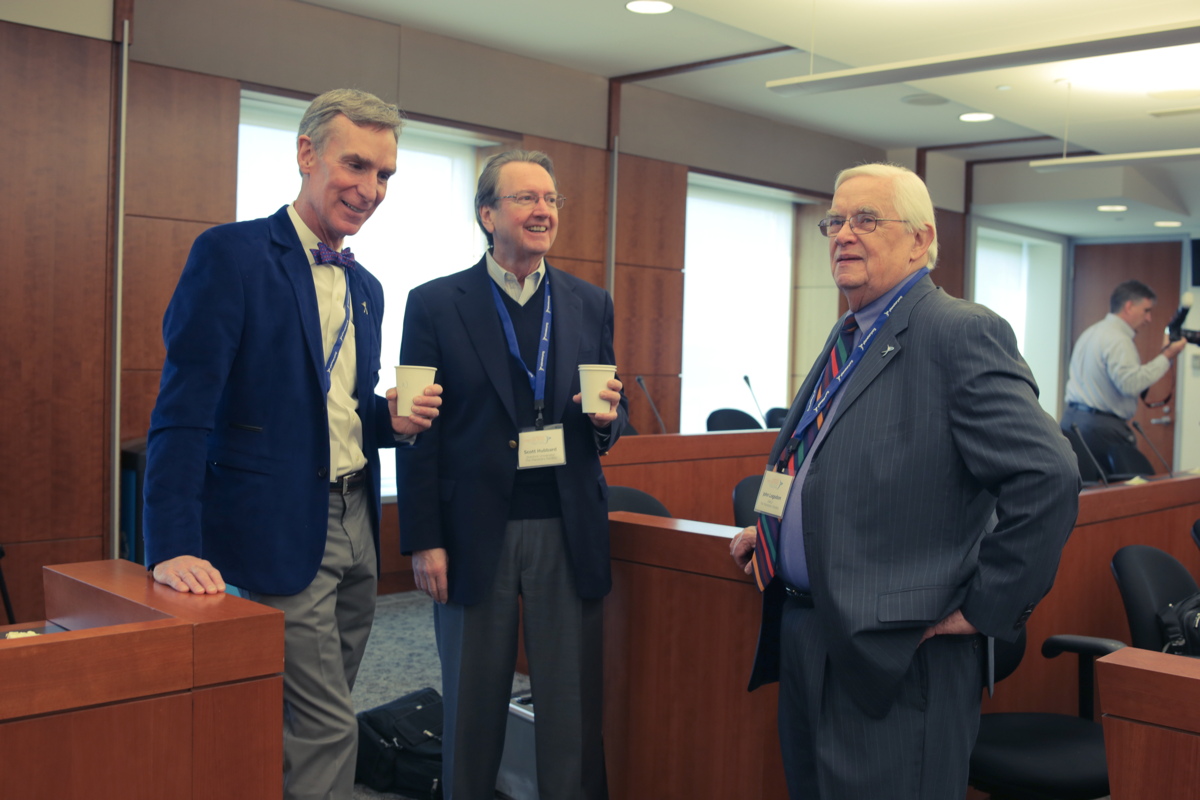Manned Mars Mission Plan: Astronauts Could Orbit by 2033, Land by 2039

NASA could get astronauts to Mars orbit by 2033 and onto the Red Planet's surface by 2039, a new report by a nongovernmental organization suggests.
At a news conference this morning (April 2), representatives of The Planetary Society presented the results of a workshop organized to discuss the feasibility and cost of a crewed mission to orbit the Martian moon Phobos in 2033, leading up to a crewed landing on the Red Planet in 2039. They concluded that such a plan could indeed fit within NASA's human space exploration budget.
"We believe we now have an example of a long-term, cost-constrained, executable humans-to-Mars program," Scott Hubbard, a professor in the Stanford University Department of Aeronautics and Astronautics and a member of The Planetary Society's board of directors, said in a statement. [5 Manned Mission to Mars Ideas]
The Planetary Society is the largest nongovernmental space advocacy organization in the world, according to its website. In addition to Hubbard, two other science experts spoke at the event: Planetary Society CEO (and former TV "Science Guy") Bill Nye and John Logsdon, a professor emeritus at The George Washington University Space Policy Institute who is also a member of The Planetary Society's board of directors.
The "Humans Orbiting Mars" workshop took place from March 31 to April 1 in Washington, D.C. The workshop's 70 attendees discussed the technical feasibility, affordability and benefits of a proposed schedule to get humans into orbit around Mars and eventually onto the planet's surface. That detailed plan was not created by The Planetary Society, but rather was proposed in a separate report co-created by NASA's Jet Propulsion Laboratory.
In a statement, the society said the attendees of the workshop "reached a consensus" on a series of key points, including that an orbital mission would be required prior to a crewed mission to the surface of Mars, and an independent cost estimate showed that the program would fit into the NASA budget, assuming the agency "ends its lead role in the International Space Station."
The panel emphasized the 2033 orbital mission as the crucial first step of the plan, comparing it to NASA's Apollo 8 mission, which took astronauts into orbit around the moon before humans landed on the satellite's surface.
Get the Space.com Newsletter
Breaking space news, the latest updates on rocket launches, skywatching events and more!
The Phobos orbital mission would last approximately 30 months, with nine months of travel each way and 12 months in orbit, the panelists said. Crewmembers would be able to study Phobos and Deimos, Mars' other moon, and potentially teleoperate rovers on the Martian surface. The panel said the current plan would use an Orion spacecraft to move crewmembers from Earth into orbit and back down.
When asked what potential roadblocks this Mars program might face, all of the panelists stated that the largest hurdles were political, not technical.
"I'm not saying the technical challenges aren't extraordinary and very, very difficult," Nye said. "And it's going to take a lot of thoughtful engineers and scientists giving it a lot of thought and science. But the real problem is politics — or the real opportunity is politics."

Logsdon said he thinks a decision on whether to adopt the plan is "an issue for the next president."
Hubbard said that, in the past, Mars missions may have been limited by technological or scientific challenges, but that no longer appears to be the case.
"In the past, when the question of humans to Mars came up, I would typically cite a number of major hurdles: biomedical, launch systems and so forth," he said. "And as of today, I think that those risks have either been reduced or you know how to minimize them, and so I am at the same place that John [Logsdon] and Bill [Nye] [are], that I think the issue now is […] political will."
Follow Calla Cofield @callacofield. Follow us @Spacedotcom, Facebook and Google+. Original article on Space.com.
Join our Space Forums to keep talking space on the latest missions, night sky and more! And if you have a news tip, correction or comment, let us know at: community@space.com.

Calla Cofield joined Space.com's crew in October 2014. She enjoys writing about black holes, exploding stars, ripples in space-time, science in comic books, and all the mysteries of the cosmos. Prior to joining Space.com Calla worked as a freelance writer, with her work appearing in APS News, Symmetry magazine, Scientific American, Nature News, Physics World, and others. From 2010 to 2014 she was a producer for The Physics Central Podcast. Previously, Calla worked at the American Museum of Natural History in New York City (hands down the best office building ever) and SLAC National Accelerator Laboratory in California. Calla studied physics at the University of Massachusetts, Amherst and is originally from Sandy, Utah. In 2018, Calla left Space.com to join NASA's Jet Propulsion Laboratory media team where she oversees astronomy, physics, exoplanets and the Cold Atom Lab mission. She has been underground at three of the largest particle accelerators in the world and would really like to know what the heck dark matter is. Contact Calla via: E-Mail – Twitter









